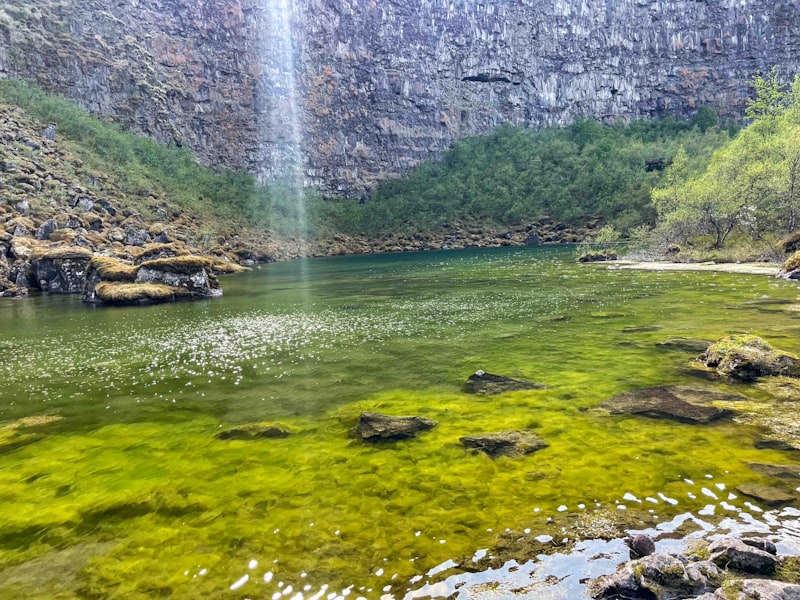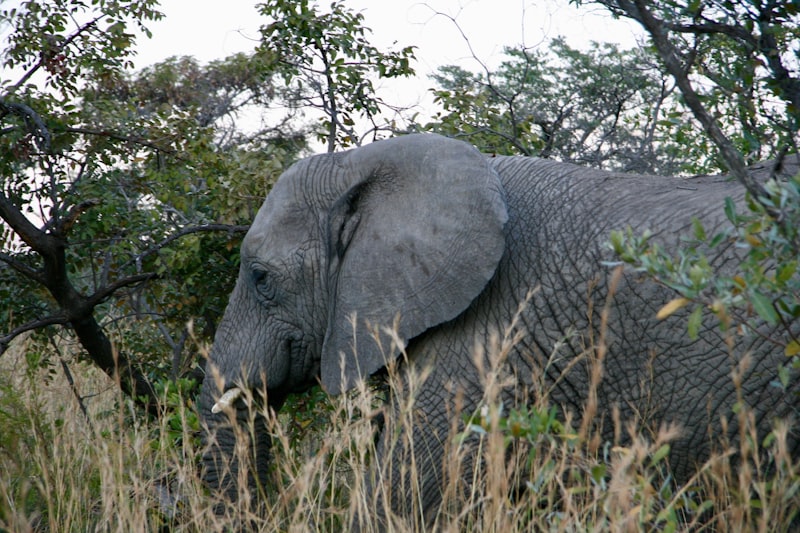Freshwater ecosystems are incredibly biodiverse, hosting a myriad of species from tiny microorganisms to large fish and amphibians. Yet, they face unprecedented threats from pollution, habitat destruction, climate change, and invasive species. Traditional conservation efforts have made strides, but genomics offers a new frontier.
So, what exactly is genomics in the context of freshwater conservation? It’s the study of an organism’s entire genetic makeup, its DNA blueprint. By analyzing DNA, scientists can delve into the genetic diversity of species, their population structures, and how they adapt to changing environments. This knowledge is crucial for designing effective conservation strategies tailored to each species’ unique genetic traits.

For example, a certain species of freshwater fish may show genetic resilience to pollutants, while another may have adaptations to survive in varying water temperatures. By pinpointing these genetic markers, conservationists can prioritize species for protection, breed resilient populations in captivity, and even genetically enhance endangered species’ survival prospects.
Furthermore, genomics helps monitor and manage biodiversity in freshwater habitats. Through environmental DNA (eDNA) sampling, scientists can detect traces of genetic material left behind by organisms in water bodies. This non-invasive technique provides insights into species presence, abundance, and distribution without directly disturbing them.
Unlocking Nature’s Code: How Genomics Is Revolutionizing Freshwater Conservation
Freshwater ecosystems are crucial habitats that support diverse aquatic life forms, from fish and amphibians to countless microorganisms. However, these delicate environments face unprecedented challenges due to pollution, climate change, and habitat destruction. In the face of these threats, scientists are turning to a powerful ally: genomics.
Genomics, the study of an organism’s entire genetic makeup, offers a revolutionary approach to understanding and conserving freshwater biodiversity. By deciphering the genetic codes of species within these ecosystems, researchers gain invaluable insights into their adaptation mechanisms, population dynamics, and evolutionary histories.
One of the key benefits of genomics in freshwater conservation lies in its ability to identify species that are particularly vulnerable to environmental changes. Through genetic analysis, scientists can pinpoint populations with reduced genetic diversity, which are often less resilient to disturbances. This information is crucial for targeted conservation efforts, allowing conservationists to prioritize resources where they are most needed.
Furthermore, genomics plays a pivotal role in monitoring and managing endangered species. By analyzing the DNA of threatened freshwater organisms, researchers can track population trends, detect hybridization with non-native species, and even uncover genetic adaptations that enable survival in altered environments. Such knowledge enables proactive conservation strategies that aim to restore and maintain healthy ecosystems.
Moreover, genomics facilitates the identification of invasive species that pose threats to native freshwater biodiversity. By comparing genetic profiles, scientists can differentiate between native and non-native species, aiding in the development of effective eradication and control measures to protect native ecosystems.
In addition to its applications in conservation biology, genomics also contributes to understanding the ecological processes that shape freshwater habitats. By studying the genetic interactions between species and their environments, researchers gain deeper insights into ecosystem functioning and resilience.
As technology advances and genomic sequencing becomes more accessible, the integration of genomics into freshwater conservation efforts holds promise for the future. By unlocking nature’s genetic code, scientists are paving the way towards more effective, evidence-based conservation strategies that safeguard our precious freshwater ecosystems for generations to come.
From Lab to Lake: Genomics’ Role in Preserving Freshwater Biodiversity
Imagine genomics as a powerful magnifying glass, allowing researchers to peer deep into the genetic makeup of freshwater organisms. This technology enables them to identify unique genetic markers that distinguish different species and populations, akin to uncovering distinct fingerprints in a crowded room. Such genetic information is pivotal in understanding how species adapt to their specific environments and how they might respond to ongoing environmental changes such as pollution, habitat loss, and climate variability.
One of the key advantages of genomic research lies in its ability to inform targeted conservation strategies. By pinpointing regions of the genome associated with adaptive traits, scientists can prioritize species or populations most at risk and tailor conservation efforts accordingly. This precision approach ensures that limited resources are effectively utilized to maximize conservation impact, much like a skilled archer hitting a bullseye from a distance.
Moreover, genomics plays a crucial role in enhancing our understanding of ecosystem dynamics. By studying the genetic diversity within and between species, researchers can unravel intricate relationships among organisms and their habitats. This deeper knowledge helps in predicting how changes in one part of the ecosystem may ripple through others, akin to understanding the interconnected gears of a clockwork mechanism.
In essence, genomics empowers conservation biologists with unprecedented tools to safeguard freshwater biodiversity. From unraveling evolutionary mysteries to guiding conservation strategies, its application stretches from laboratory benches to the vast expanse of lakes and rivers worldwide. As we delve deeper into the genetic code of freshwater life, we open new avenues for preserving these vital ecosystems for future generations without boundaries.
Preserving Purity: Genomic Strategies to Safeguard Freshwater Ecosystems
Freshwater ecosystems are vital reservoirs of biodiversity, supporting a myriad of species and providing essential resources for human consumption and recreation. However, these delicate habitats face increasing threats from pollution, climate change, and invasive species. To combat these challenges and safeguard the purity of freshwater ecosystems, scientists are turning to genomic strategies.

Genomics, the study of an organism’s entire genetic makeup, offers powerful tools for conservation biologists. By analyzing the DNA of aquatic species, researchers can gain valuable insights into their population dynamics, genetic diversity, and resilience to environmental stressors. This information is crucial for developing effective conservation strategies tailored to specific species and ecosystems.
One key genomic approach is environmental DNA (eDNA) analysis. This technique involves extracting and analyzing genetic material shed by organisms into their environment, such as water samples. By detecting traces of eDNA, scientists can identify the presence of rare or elusive species without directly observing them. This non-invasive method is revolutionizing biodiversity monitoring and enabling early detection of invasive species or pollutants.
Another promising genomic tool is genome editing, which allows scientists to precisely modify the DNA of organisms. While still in its infancy for wild populations, genome editing holds potential for controlling invasive species or enhancing the resilience of native species to environmental changes. However, ethical considerations and regulatory frameworks must be carefully navigated before widespread implementation.
Furthermore, genomic research provides insights into the evolutionary history of freshwater species, shedding light on their adaptation to changing environments over time. This evolutionary perspective is invaluable for predicting how species may respond to future environmental challenges and guiding conservation efforts accordingly.
Genomic strategies offer a potent arsenal for preserving the purity and resilience of freshwater ecosystems. By leveraging advances in genomics, scientists can enhance biodiversity conservation, mitigate the impacts of human activities, and ensure the sustainable management of our precious freshwater resources. As we continue to innovate and refine these tools, the promise of safeguarding freshwater ecosystems for future generations grows ever brighter.
The DNA of Clean Water: Genomics’ Impact on Freshwater Quality Management
In the past, assessing water quality relied largely on physical and chemical measurements. While these methods are informative, they often provide a snapshot rather than a comprehensive understanding of ecosystem health. Genomics changes this by providing a biological fingerprint of water bodies. By analyzing the DNA extracted from water samples, researchers can detect harmful pathogens, invasive species, and even trace the sources of pollution.
The implications are profound. For instance, genomic techniques can swiftly identify outbreaks of waterborne diseases by pinpointing the genetic signatures of pathogens like E. coli or harmful algal blooms. This early detection enables rapid response measures to protect public health and aquatic ecosystems.
Furthermore, genomics aids in proactive management strategies. By monitoring changes in microbial communities over time, scientists can assess the long-term impacts of climate change, urbanization, and agricultural practices on water quality. This proactive approach allows for targeted interventions to prevent pollution and preserve biodiversity.
Analogously, genomics acts as a powerful microscope for the environment, revealing intricate details that were once invisible. It transforms how we perceive and manage freshwater resources, ensuring they remain clean and sustainable for future generations. As technology advances and genomic tools become more accessible, their role in safeguarding water quality will continue to expand, paving the way for smarter environmental stewardship worldwide.
Genetic Guardians: Using Genomics to Protect Endangered Freshwater Species
Imagine a world where every splash in a pond tells a story of survival against the odds. This is the realm of genetic guardianship, where science meets stewardship to protect our endangered freshwater species. In the depths of rivers and lakes, a silent battle rages on—a battle for biodiversity and ecological balance.
Genomics, the study of an organism’s entire DNA sequence, has emerged as a potent tool in this fight. By decoding the genetic blueprints of endangered freshwater species, scientists gain crucial insights into their health, resilience, and evolutionary history. This knowledge isn’t just academic; it’s a lifeline for species teetering on the brink.
Take the plight of the Yangtze giant softshell turtle, a living fossil that epitomizes the fragility of freshwater biodiversity. Through genomic analysis, researchers pinpointed genetic variations that could hold the key to its survival. Such breakthroughs are not just about saving a single species but safeguarding entire ecosystems that depend on them.
But how does genomics actually protect these species? Think of it as a molecular crystal ball. By understanding the genetic diversity within populations, scientists can devise targeted conservation strategies. Whether it’s breeding programs that maximize genetic variability or identifying individuals with unique adaptive traits, genomics offers a precision that traditional conservation approaches lack.
Moreover, genomics allows scientists to anticipate threats before they become devastating. By monitoring genetic changes over time, researchers can detect early signs of population decline or susceptibility to diseases exacerbated by environmental stressors. It’s like having a genetic radar that alerts us to dangers invisible to the naked eye.
In essence, genetic guardianship through genomics is rewriting the playbook for freshwater conservation. It’s a testament to our growing understanding of the intricate web of life that thrives beneath the water’s surface. As we navigate an era of unprecedented environmental change, this fusion of science and stewardship offers hope—a beacon illuminating the path towards a future where endangered freshwater species not only survive but thrive.
Innovation Flows: How Genomics Technology Is Reshaping Freshwater Policy
Genomics tools enable researchers to identify and monitor aquatic species with unparalleled precision, from microscopic organisms to keystone species crucial for ecosystem balance. By analyzing DNA sequences extracted from water samples, scientists can detect the presence of invasive species early, preventing ecological disruptions and preserving native biodiversity.
Moreover, genomics enhances water quality assessments by pinpointing sources of contamination more accurately. Traditional methods often struggle to identify specific pollutants or pathogens, whereas genomic technologies can detect and trace microbial contaminants swiftly and effectively. This capability empowers policymakers to implement targeted interventions and improve water treatment strategies, safeguarding public health and ecological integrity.
In the realm of freshwater conservation, genomics facilitates adaptive management approaches that respond dynamically to environmental changes. By understanding genetic diversity and resilience within aquatic populations, policymakers can develop strategies to mitigate the impacts of climate change, habitat loss, and pollution on vulnerable species.
The transformative impact of genomics on freshwater policy underscores its role as a catalyst for sustainable development. As technological advancements continue to expand our understanding of aquatic ecosystems, integrating genomic insights into policy frameworks becomes increasingly essential for achieving long-term environmental stewardship and resilience.
Frequently Asked Questions
How does genomics help in understanding freshwater biodiversity
Genomics aids in understanding freshwater biodiversity by analyzing DNA sequences of organisms living in freshwater habitats. This analysis reveals genetic diversity, evolutionary relationships, and adaptations crucial for conservation and management efforts.
What is the role of genomics in freshwater conservation
Learn about the crucial role of genomics in freshwater conservation, exploring how genetic research aids in understanding biodiversity, identifying endangered species, and implementing effective conservation strategies.
What are the ethical considerations of using genomics in freshwater conservation
Explore the ethical considerations of applying genomics in freshwater conservation, focusing on responsible genetic manipulation and biodiversity preservation. Understand the balance between scientific advancement and environmental impact, ensuring ethical guidelines are upheld to safeguard aquatic ecosystems and species diversity.
How can genomic data aid in managing endangered freshwater species
Discover how genomic data plays a crucial role in conservation efforts for endangered freshwater species. Learn how genetic insights enable tailored management strategies, aiding in population monitoring, identifying genetic diversity, and guiding breeding programs to ensure species survival.
What are the applications of genomics in restoring freshwater ecosystems
Discover how genomics is applied to restore freshwater ecosystems through targeted research on species resilience, biodiversity preservation, and environmental adaptation. Learn how genetic insights help in identifying and mitigating threats to aquatic habitats, fostering sustainable conservation efforts.


